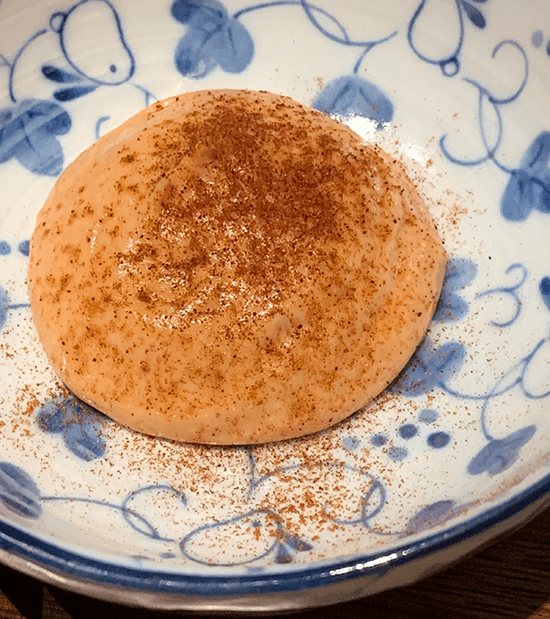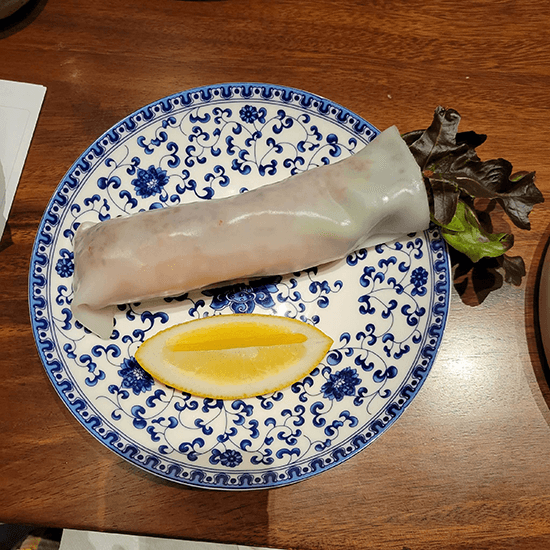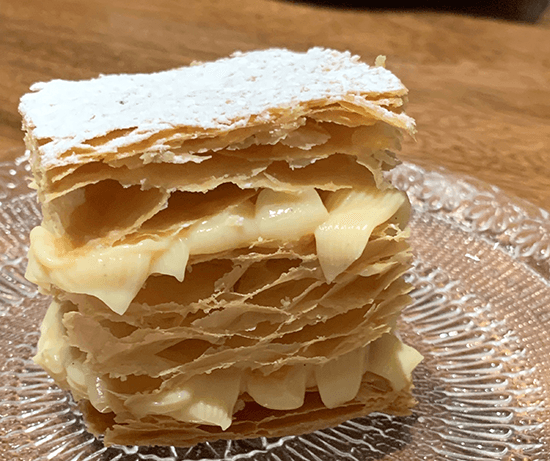Jordy Navarra pays homage to Maria Orosa in pop-up dinner
After being listed among Asia’s Fifty Best Restaurants and winning several other awards, what else is left for Toyo Eatery to do? Trust chef Jordy Navarra to come up with more of his innovative ideas.
Faster than anyone can say “congratulations,” Navarra opened a pop-up restaurant in Rockwell’s Balmori Suites, which will serve a menu that will pay homage to food scientist, freedom fighter, and war hero Maria Y. Orosa.
“We want to raise awareness of what Maria Orosa did for society and food culture,” says Navarra. Like Orosa, Navarra aims to make use of abundant ingredients that grow naturally in the country. Ingredients like bananas, for instance, and malunggay leaves, rice, and the almost-forgotten fruit Roselle.
Bananas bear a particular significance to Orosa’s heritage, as it was she who invented the now ubiquitous banana ketchup, without which no Filipino kitchen would be complete. Tangy, mildly sweet yet mildly spicy, banana ketchup is used for everything from dips to sauces to marinades. As the name implies, it’s made—not from tomatoes, as Western-style ketchups are—but from bananas, which are rich in potassium and plentiful in the Philippines.

At a preview dinner attended by members of the distinguished Orosa family, including Evelyn and Matt Garcia, Chic and Lito Francisco, and Milette Orosa, we were served a dollop of Navarra’s own spin on banana ketchup. Made from the bulkan variety of bananas grown in Tarlac, the bananas were first blackened then pounded into a smooth mash before being thickened with banana blossom and mixed with house-made mayonnaise to add creaminess. With a bit of tomato for color and a sprinkling of chili and garlic powder, it was banana ketchup reinvented for the 21st century.
Other items on the menu similarly drew inspiration from Orosa—the use of malunggay leaves, for instance. Like bananas, malunggay not only grows abundantly but its leaves are also rich in vitamins and minerals. At the dinner, the butter served with grilled (bromate-free) bread was dusted with wisps of nutritious malunggay.
It’s nice that nowadays there’s really a movement trying to find what we have and how to use it… learning our culture, where we are, and how it relates to food.
The sinandomeng variety of rice was steamed with fragrant pandan, but rice was also on the menu in the form of wine, specifically the tapuey wine from Ilocos. This fermented rice wine, which is served in the mountain provinces on special occasions, comes with its own myths and legends. At our table, only food historian Ige Ramos was brave enough to try it, and he pronounced it slightly sweet (somewhat similar to the Japanese rice wine, sake).

Like the food at Toyo Eatery, the dishes served during the Orosa dinner were admirable both for their simplicity and complexity. The bagoong was made from scratch, the mangoes, bought in bulk from local farmers, were raw but fermented and the batons of singkamas had been aged.
The prawn lumpia, on the other hand, was encased in a different kind of wrapper, one made diligently, not with flour and eggs, but with steamed glutinous rice. Reminiscent of the rice rolls served in dim sum restaurants, it was translucent and yielded easily to reveal its filling of prawns and vegetables, served with a sauce made of steamed shrimp heads and annatto.

The piniritong pata (which is Toyo’s own rendition of crispy pata) may sound mundane but again, its preparation was epic. First, they used pork from the legendary black pig grown in the cool, airy farms of Batangas. The pork was simmered to tenderness, deboned, deep-fried then seared in hot oil. The broth into which the pork had been simmered was patiently thickened into brown, flavorful gravy.
Not content with using any of the dozens of regional longganisa throughout the country’s 7,100 islands, Toyo made its own longganisa for the dinner. “We buried the slabs of pork in a tapay to ferment it then we ground the pork for the longganisa,” said Navarra. “What’s nice about longganisa is that we have regional representations. This is the Manila-style longganisa.”

Not only was it unique, but also enrobing it with bok choy then encasing it in puff pastry made the dish look like the upscale Beef Wellington, worthy of presentation in a gourmet dinner.
For the fish course, we had bisugo, or sea bream. This pinkish fish looked almost skeletal on the serving plate—that’s because it was completely devoid of all its thorny bones, making it not only crisp but also safer and easier to eat.

Our dessert was the more conventional Napoleones, wafer-thin layers of puff pastry interspersed with vanilla pastry cream and dusted on top with powdered sugar. Crunchy and well chilled, it was the perfect palate refresher, a fitting ending to a journey of a meal.
Meanwhile, Navarra isn’t one to rest on his laurels. There’s still the coming to work every day, he says, and finding improvements. “The more we discover about Filipino food, our ingredients, and our culture, parang the more I realize I don’t know anything. The deeper you go in, the more there’s nuance and information and detail,” he says.
Already his staff has made a cold brew using Roselle, a reddish, berry-like fruit for which Maria had developed a number of recipes. Other recipes inspired by Orosa may also be in the works.
“It’s nice that nowadays there’s really a movement trying to find what we have and how to use it… learning our culture, where we are, and how it relates to food,” says Navarra.
No doubt that statement would have tremendously pleased Maria Orosa.
* * *
The Orosa pop-up dinner will be served at the Ground Floor, Balmori Suites, Power Plant Mall, Rockwell Center, Makati, until May 14, open daily except Mondays, from 11:30 a.m. to 9 p.m.


